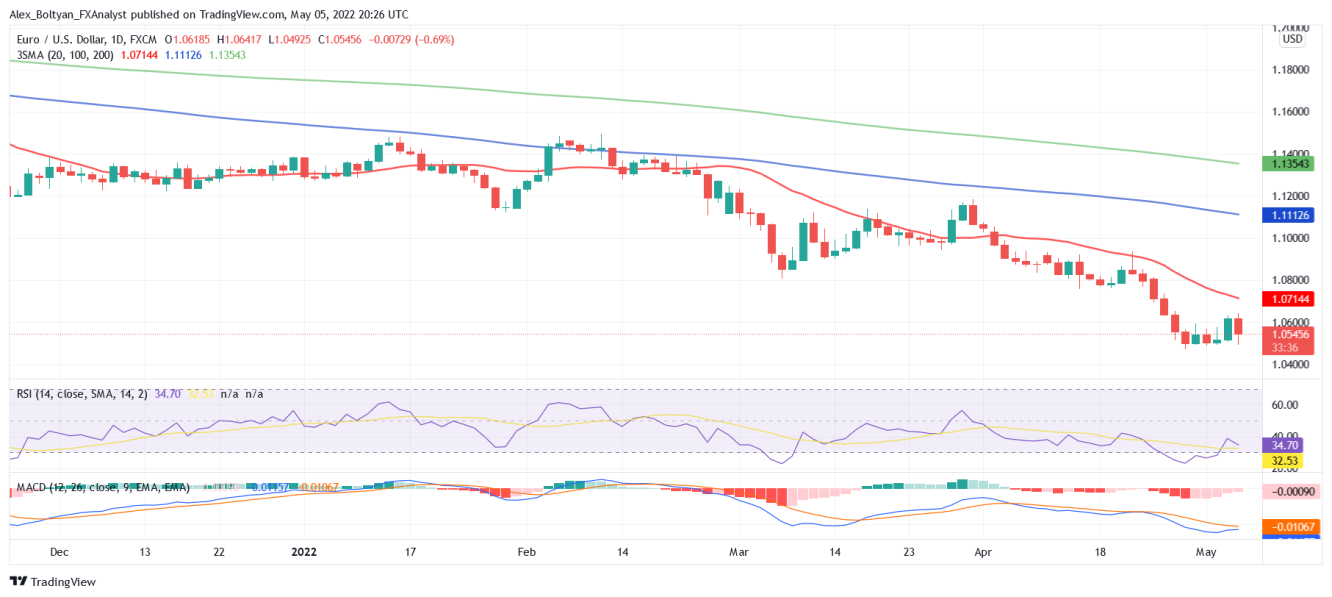The EUR/USD pair reversed Wednesday’s gains and fell to retest weekly lows as a bout of risk aversion halted the Fed decision-led spike. The pair dropped from a high of 1.0641 to a low of 1.0492 before stabilizing at the 1.0550s.
The Federal Reserve decided to hike the Fed funds rate range by 50 bps to 0.75%-1.00%, the most considerable increase in 22 years. At the press conference, Chair Powell confirmed that Quantitative Tightening – reducing the balance sheet size – will start in June, although slower than analysts expected. Powell also ruled out a 75bp hike and instead pointed out two –not four – 50bp increases at upcoming meetings.
The “not-so-hawkish” message put the US dollar under pressure and sent stocks soaring in the aftermath. However, everything changed on Thursday after the Bank of England warned that the U.K. economy could fall into recession this year.
The BoE triggered risk aversion across financial markets, which boosted U.S. yields and the greenback while weighing on riskier assets. The yield on the United States 10-Year note reached its highest level since 2018 at 3.106%, while the DXY reached a marginal new cycle high at 103.94.
As for the EUR/USD, the pair took a U-turn and dropped below 1.0500 before recovering slightly. The short-term technical perspective remains bearish, according to the daily chart. The RSI has turned south after correcting oversold conditions, while the MACD remains in negative territory, signaling the loss of selling momentum.
The immediate support level is now seen at the weekly lows around 1.0490, followed by the five-year low at 1.0470 last week. A break below this level could pave the way to 1.0400 en route to 2017 lows at 1.0340.
On the other side, the EUR/USD needs a close above the 20-day SMA, currently at 1.0710, to alleviate the immediate pressure and attempt a rise toward 1.0800.


